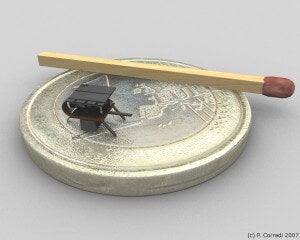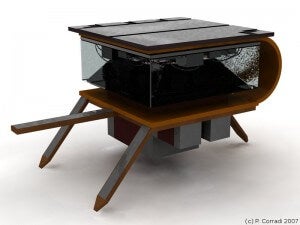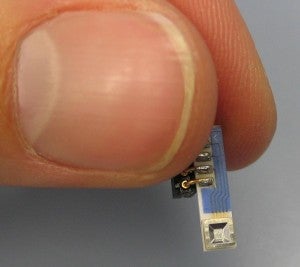I-Swarm, You swarm, we all swarm for — OMFG, robots!

While many robots find success by mimicking humans, there’s a whole set of robotics dedicated to imitating ants and bees. We’ve seen some of these swarm-bots before, but none of them have the microscopic success of I-Swarm. A multinational project of the EC, I-Swarm has built tiny self-contained robots capable of communication and joint action. These little guys may be miniature, but I-Swarm hopes that, in numbers, they could accomplish almost any physical task. Check out the cool pics and a brief video after the break.
While human scale robots can do some impressive things, tiny insect-like bots are capable of much more. Working in groups of hundreds, thousands, or millions, swarm bots will one day be able to construct objects at the microscopic level or break them down to the same degree. If built on a nano-scale, swarm robots may be able to fight diseases, construct miniature computer chips, and maintain equipment in a near-perfect state. I-Swarm is taking an important step in realizing these goals by integrating many of the necessary parts all in the same tiny package.
I-Swarm is similar to other swarm robots we’ve reviewed before, but the completeness of their system is impressive. They’ve got actuators, micro solar cells, mini wireless communication devices, IC chips, and optics sensors all within their tiny frames. Except for the inability to reproduce and the lack of a robust manipulator, I-Swarm bots are pretty much ideal swarm robots.

Of course, it’s the lack of manipulation that is a little surprising. After all, I-Swarm stands for intelligent small-world autonomous robots for micro manipulation. Exploring their website, I couldn’t find a demonstration of manipulation, though it’s clear from the photos that the proboscis-like front appendage is supposed to function in that manner.

Still, the locomotion module video is clearly impressive – the microscopic motion of the legs is pretty much invisible. The scale of the different modules is also extraordinary. That optical sensor is miniscule, but it is sensitive enough to work as a programming interface. I-Swarm has experimented with instructing their bots with high speed pulses of intense light. Such a system would not only avoid redundancy in the hardware, it would also allow an operator to instruct the entire swarm at once. Cool idea.
There are, of course, many competing programs, such as MiCRon, in the race to create the first fully functional swarm of robots. Most are still trying to perfect the individual members of the swarm, so it’s hard to determine if there will be a clear winner soon. I-Swarm’s tiny size shows that most, if not all, the necessary hardware can fit into a much smaller space than some would anticipate. Future generations of swarm robotics, from I-Swarm or elsewhere, will only get smaller in size and more versatile in accomplishments.
I can’t wait until these things start being able to construct copies of themselves and other devices. When that happens, we will be looking at a new age of manufacturing. Unless the swarm goes all killer-bee and turns on its creators. Just in case, I’m learning how to use a flashlight to say, “ctrl-alt-del.”

[Photo Credits: I-Swarm and P. Corrack]


